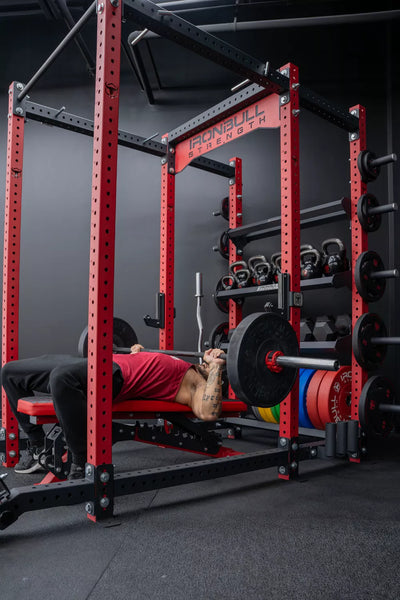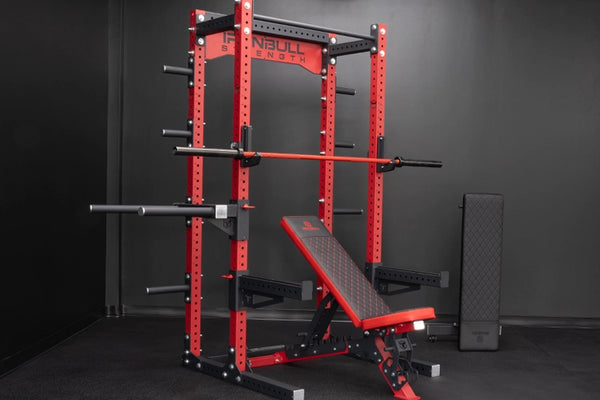
A Comprehensive Guide to Securing Power Racks: Bolted vs Flat-Footed Designs
Rack stability is crucial for safe and effective weightlifting. Proper securing prevents accidents and allows full focus on form and technique during heavy lifts like squats and bench presses.
Two main rack designs dominate the market: bolted-down and flat-footed racks.

Man using power rack for weightlifting
Bolted-Down Racks - Maximum stability for heavy lifting - Ideal for dedicated gym spaces - Perfect for commercial settings - Requires permanent floor modification - Difficult to relocate

Red and black adjustable workout bench
Flat-Footed Racks - No drilling or permanent installation needed - Easy to move and reposition - Great for multi-purpose spaces - May need extra stabilization for heavy lifts - Possible slight movement under maximal loads
Key Selection Factors - Training goals and expected weight loads - Available space and floor type - Installation restrictions (rental agreements, building codes) - Budget considerations - Need for mobility and space optimization
Recommendations - Choose bolted-down racks for: - Powerlifting - Permanent gym setups - Commercial facilities - Maximum stability needs
- Choose flat-footed racks for:
- Home gyms
- Multi-purpose spaces
- Temporary setups
- Rental properties
- Frequent reorganization needs
Consider your long-term training goals, space constraints, and installation capabilities when making your final decision. Both designs can provide safe and effective training environments when properly matched to your needs.
Related Articles

Hidden Joint Risks in Raw Lifting: What Every Lifter Should Know About Support Equipment

